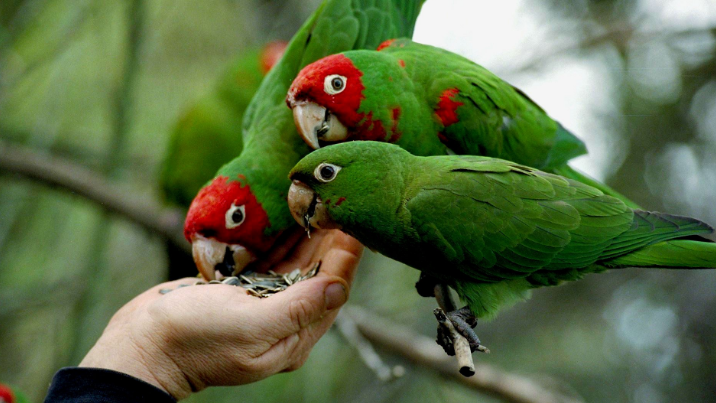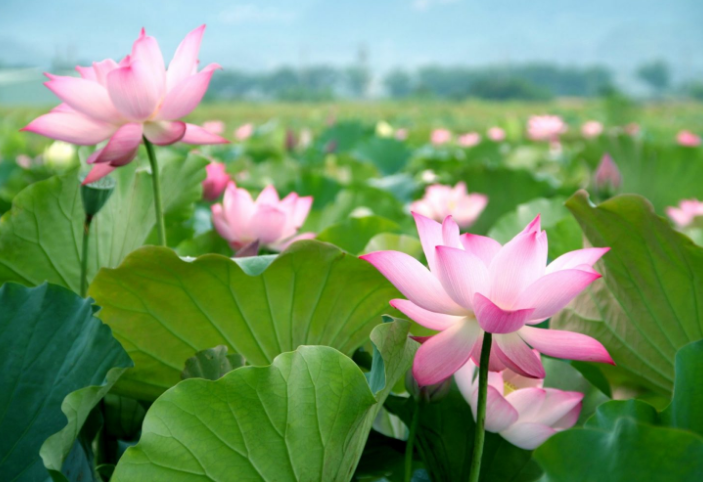What Is Flora ?
Flora can be defined as a group of indigenous plants (trees, plants and other forms of life such as fungi and algae) in an ecosystem of a given geographical region of the planet or have grown in an area during a certain time period. Examples of flora include:
- Grassland
- Giant redwood trees
- Nepenthes
- Forest
- Welwitschia Mirabilis
- Palm trees
- Sunflowers and all kind of plant vegetation
What Is Fauna?
Fauna can be defined as a group of indigenous animals found in any geographical region of the planet or can be found during a certain period of the year or have lived in a certain area of the planet at some point in time. Therefore, biologists came up with the term flora and fauna to refer to a collection of plant and animal species in a given geographical location. Examples of fauna include:
- Birds
- Animals
- Eltham Copper butterfly
- Fish
- Insects
- Southern Toadlet
- Coral
- Lions
- Tigers
- Cows
- Bears
The key Difference
The following points highlight the difference between Flora and Fauna in terms of their characteristic features: The basis of comparison include: Ability to make own food, gaseous exchange, reproduction, response to stimuli, Digestive system, cellular organelles, excretion, movement and discipline under which each of them is studied.
- Flora is the plant life naturally occurring in a particular geographical region. Fauna on the other hand, is all of the animal life present in a particular region or time. Flora, fauna and other forms of life such as fungi are collectively referred to as biota.
- Flora have the ability to make their own food with the help of carbon dioxide and water in the presence of chlorophyll and sunlight, whereas the fauna depends on flora for food.
- Flora needs no digestive system as they synthesize their own food. They store carbohydrates in the form of starch. On the other hand, fauna have digestive system to digest the food before it is absorbed by the alimentary canal. They store carbohydrates in the form of glycogen.
- Exchange of gases in flora takes place through stomata while fauna have lungs, gills, skin etc for exchange of gases. Some fauna use oxygen of the air while others use oxygen of the surrounding water.
- Flora reproduces asexually by spores and vegetative methods whereas fauna reproduce by asexual and sexual means.
- Flora do not have nervous system and sense organs and therefore the response to stimuli like light or heat is slow. Fauna on the other hand, have nervous system and sense organs. Their response to stimuli in their environment is quick.
- Flora secretes harmless products which are stored in their bodies. Fauna on the other hand, excrete ammonia, urea, uric acid and other wastes which get eliminated through excretory systems.
- Flora has no ability to move from one place to another, they are stationary whereas fauna have ability to move from one of place to another in search for food.
- Almost all flora cells have a cell wall made up of cellulose whereas, in fauna the cells lack a cell wall, only a plasma membrane is present.
- Chloroplasts are present in flora and are used for storing energy whereas in fauna, chloroplasts are absent, instead they have mitochondria for storing energy.
- Flora are studied under a discipline referred to as botany whereas fauna are studied under a discipline referred to as zoology.
- The growth of flora takes place throughout the life, the meristematic system present in the tip of roots and stems support the growth (indeterminate growth). However, in fauna, the organs and organ system supports grow up to a limit (determinate growth).
- Examples of flora include: grassland, forest, palm trees, sunflowers and all kind of plant vegetation. On the other hand, examples of fauna include: birds, animals, fish, insects, lions, tigers, cows, bears etc.
The Difference Between Flora and Fauna In Tabular Form
| BASIS OF COMPARISON | FLORA | FAUNA |
| Description | Flora is the plant life naturally occurring in a particular geographical region. | Fauna is all of the animal life present in a particular region or time. Flora, fauna and other forms of life such as fungi are collectively referred to as biota. |
| Ability to Make Own Food | Flora have the ability to make their own food with the help of carbon dioxide and water in the presence of chlorophyll and sunlight. | Fauna depends on flora for food. |
| Digestive System | Flora needs no digestive system as they synthesize their own food. They store carbohydrates in the form of starch. | Fauna have digestive system to digest the food before it is absorbed by the alimentary canal. They store carbohydrates in the form of glycogen. |
| Gaseous Exchange | Exchange of gases in flora takes place through stomata. | Fauna have lungs, gills, skin etc for exchange of gases. |
| Reproduction | Flora reproduces asexually by spores and vegetative methods. | Fauna reproduce by asexual and sexual means. |
| Response To Stimuli | Flora do not have nervous system and sense organs and therefore the response to stimuli like light or heat is slow. | Fauna have nervous system and sense organs. Their response to stimuli in their environment is quick. |
| Excretion | Flora secretes harmless products which are stored in their bodies. | Fauna excrete ammonia, urea, uric acid and other wastes which get eliminated through excretory systems. |
| Movement | Have no ability to move from one place to another, they are stationary. | Have ability to move from one of place to another in search for food. |
| Cell Wall | Cells have a cell wall made up of cellulose. | Cells lack a cell wall, only a plasma membrane is present. |
| Chloroplast | Chloroplasts are present in flora and are used for storing energy. | Chloroplasts are absent; instead they have mitochondria for storing energy. |
| Discipline | Flora are studied under a discipline referred to as botany. | Fauna are studied under a discipline referred to as zoology. |
| The growth of flora takes place throughout the life, the meristematic system present in the tip of roots and stems support the growth (indeterminate growth). | In fauna, the organs and organ system supports grow up to a limit (determinate growth). | |
| Examples | Examples of flora include: grassland, forest, palm trees, Sunflowers and all kind of plant vegetation. | Examples of fauna include: birds, animals, fish, insects, lions, tigers, Cows, bears etc. |
What Is The Importance Of Flora And Fauna?
- Maintains ecological balance, without them human civilization will collapse.
- The spread of flora and fauna contributes to the aesthetic value.
- Flora and fauna contributes to growth of economies through tourism.
- Flora is responsible for consuming carbon dioxide while generating oxygen that is consumed by fauna and eventually releases carbon dioxide that is used by flora in photosynthesis.

